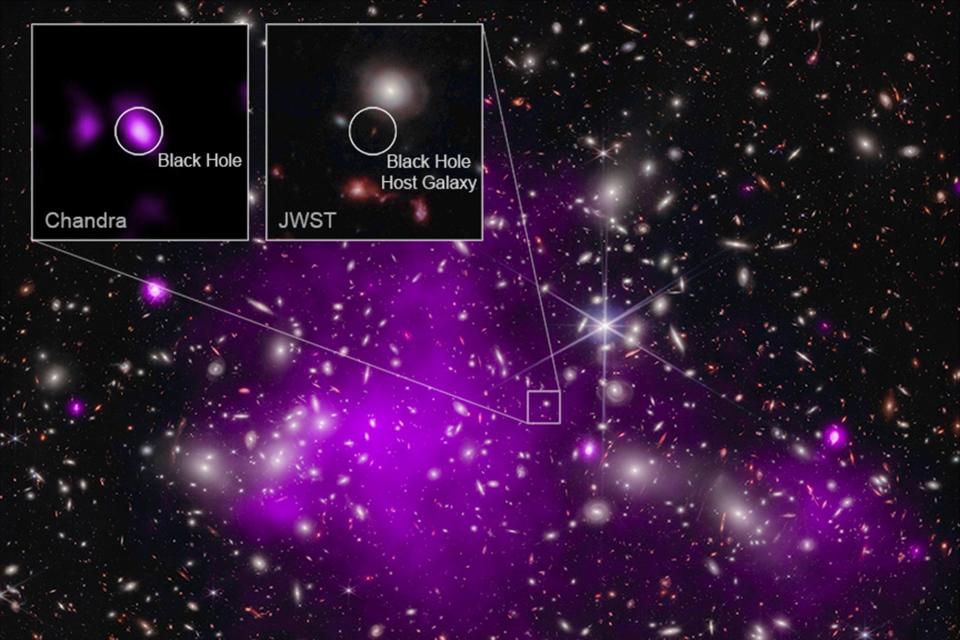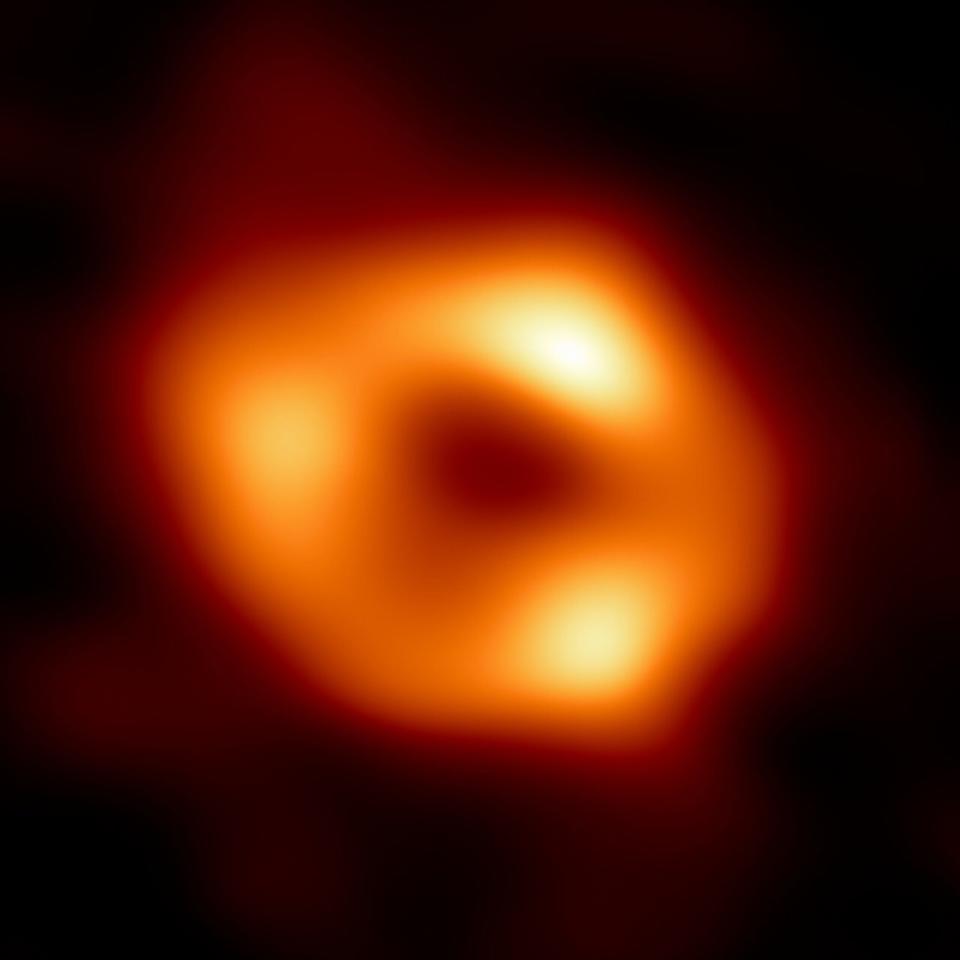Researchers discover oldest known black hole that existed not long after the Big Bang
The discovery of a gigantic black hole billions of light-years from Earth is giving researchers a clearer picture of the dawn of the universe.
Using data from NASA’s James Webb Space Telescope and Chandra X-Ray Observatory, researchers were able to pinpoint the oldest black hole ever discovered. And not only is it ancient, but it's absolutely colossal − 10 times bigger than the black hole in our own Milky Way.
What is space junk? Why space agencies are seeking to reduce the amount of orbital debris from aging satellites
Formed 470 million years after the Big Bang, its existence confirms the theory that supermassive black holes were part of the early universe. Scientists estimate that the universe is 13.7 billion years old, which makes the age of the black hole 13.2 billion years.
The findings, published Monday in the journal Nature Astronomy, suggest that the black hole was born supermassive − roughly equal to 10 and 100 million suns − during the earliest era of the universe. A companion article appeared in the Astrophysical Journal Letters.
"It’s like planting a sapling, which takes less time to grow into a full-size tree than if you started with only a seed,” study co-author Andy Goulding, an astrophysicist at Princeton University, said in a news release. “There are physical limits on how quickly black holes can grow once they’ve formed, but ones that are born more massive have a head start."

'Not to be missed': 'Devil comet' may be visible to naked eye in April. Here's how to see it.
When was the first black hole discovered?
The first black hole was identified in 1964 when astronomers used a sounding rocket to detect celestial sources of X-rays within the Milky Way in the constellation of Cygnus, according to NASA.
But it wasn't until four years ago that humanity caught the first glimpse of a black hole when scientists released a photo of one in a giant galaxy 53 million light-years from Earth.
The image of the black hole, which was refined in April to appear more clear, resembled a flaming doughnut-shaped object emerging from a dark backdrop in the Virgo cluster.
Research around the celestial objects has been tricky given the inability for humankind to get close to black holes, regions of space where the pull of gravity is so intense that even light doesn't have enough energy to escape.
But the photo of one gleaned from images from telescopes around the world was a step forward for scientists who have long been interested in learning more about the mysterious objects. Since then, scientists in April revealed the discovery of two black holes bigger than our sun residing in "our cosmic backyard."

'Awe-inspiring:' See 5 stunning photos of the cosmos captured by Europe's Euclid telescope
Study: Black hole was supermassive from the beginning
The newly discovered black hole is in an early stage of growth when its mass is similar to that of the entire galaxy, which researchers have never before witnessed, according to NASA.
Led by Akos Bogdan of the Harvard-Smithsonian Center for Astrophysics, the team found the black hole in a galaxy named UHZ1 in the direction of the galaxy cluster Abell 2744. The two space telescopes − Webb and Chandra − used a technique called gravitational lensing to magnify the region of space where the galaxy and the black hole are located and boost the amount of light detected.
While the galaxy cluster is 3.5 billion light-years from Earth, Webb data revealed the light from UHZ1 itself was emitted 13.2 billion years ago, when the universe was only 3% of its current age. Researchers made two weeks of observations with Chandra that showed the presence of intense, superheated X-ray emitting gas in this galaxy − a telltale sign of a growing supermassive black hole.
The researchers believe the black hole − which unlike most black holes has roughly the same mass as all the stars in the galaxy combined − formed from the collapse of massive clouds of gas. The black hole doesn't appear to have grown gradually but rather was supermassive from its earliest formation.
“For the first time we are seeing a brief stage where a supermassive black hole weighs about as much as the stars in its galaxy, before it falls behind," Yale University astrophysicist Priyamvada Natarajan, who took part in the study, said in a statement.
Radio waves: Burst that traveled 8 billion years to reach Earth is the farthest ever detected
Life on Mars? Researchers find signs of rivers on Mars, a potential indicator of ancient life
Discovery is latest made by Webb telescope
It's the latest discovery made possible by NASA's James Webb telescope, which launched in 2021 to a point 1 million miles away.
The newest of NASA's space telescope fleet, Webb is the biggest and most powerful astronomical observatory ever sent into space. While Webb sees in infrared, Chandra, which was launched into orbit in 1999, has X-ray vision.
In Webb's two years, the telescope has offered stunning views of our solar system's planets, galaxies, stars and other parts of the universe never glimpsed before.
In February, NASA shared the findings from the Webb telescope of "mega galaxies" that date back to within 600 million years of the Big Bang.
And in September, Webb uncovered evidence of a possible ocean world larger than Earth with conditions that could support life. It was the second time this year that the telescope discovered a planet outside our solar system, known as an exoplanet, that shares similar qualities with Earth.
Eric Lagatta covers breaking and trending news for USA TODAY. Reach him at elagatta@gannett.com
This article originally appeared on USA TODAY: Researchers discover ancient supermassive black hole dating to Big Bang

